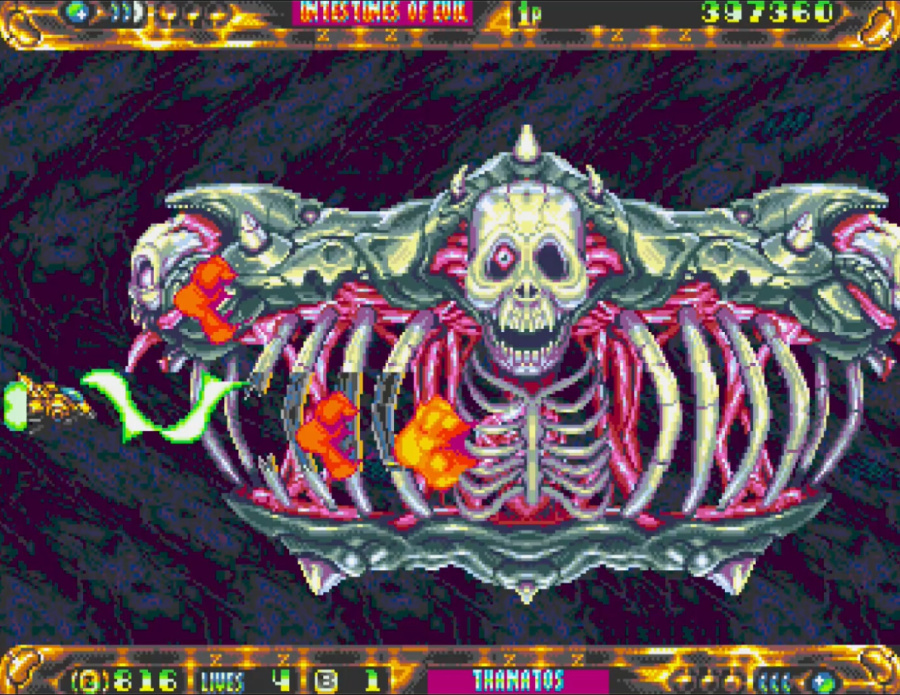
We're certainly not short of 'new' Mega Drive / Genesis games, but ZPF seems to have captured the imagination of more people than most other examples. Following an incredibly successful crowdfunding campaign and the news that it's also coming to modern-day systems, this horizontally scrolling shooter has now arrived on Sega's 16-bit console, proving that there's certainly life in the old dog yet—and then some.
Developers such as Treasure and Technosoft pushed the Mega Drive / Genesis to its limits back in the day, but it's fair to say that many modern homebrew projects, while showing impressive levels of passion, don't quite achieve the same. ZPF is different, as the team behind it have come very, very close to matching the system's most technically impressive '90s outings, with dazzling visuals, massive boss fights and plenty of convincing parallax scrolling.

Set in a weird and wonderful world which fuses fantasy with sci-fi, ZPF is set across seven visually distinct stages, with the first three being played in the order of your choosing. Likewise, the three playable ships are unique from one another; Gold is a spaceship with powerful, focused projectile attacks, while Gladius has weaker shots deployed in a spread pattern, giving you more coverage. Knight is the outlier of the trio; it's not a ship but literally a flying suit of armour and has the most powerful melee attacks. This feature, which requires the player to get up close and personal with the enemy, can be risky. Each craft has a bomb attack, too.
Having three playable ships already adds to the replayability on offer, but the multiple endings build on that—and you'll also need to obtain a key hidden in each stage to gain access to the 'best' possible conclusion to the game. This certainly isn't a game you'll finish once and then abandon.
There are no weapons to collect during play, which might seem like a drawback for some players but it actually offers a deep and nuanced system. Taking down enemies earns you credits that can be spent in between stages to power up your ship, add a score multiplier, gain a continue, unlock hints, and even reduce the density of enemy bullets. Losing a life reduces your currency slightly, but you can always adjust this element in the options menu (as well as bring down the difficulty, boost your stock of lives and increase the number of screen-clearing bombs you start the game with). The ending you get is influenced by your score, and it's possible to cash out currency to boost your points.

Visually, ZPF is quite unlike any other shooter from the 16-bit era. Sure, titles like Gynoug and Cho Aniki are pretty unique, but ZPF's dizzying mish-mash of worlds makes for a truly mind-bending experience; one level sees you infiltrating a goblin's castle, while another has you flying over the neon-lit streets of a Blade Runner-style cityscape. Each stage is home to an impressive boss encounter, with some of the best examples literally filling the screen.
While there's the obvious problem of cohesion here—it sometimes feels like you're playing three different shooters at once—the visuals are jaw-droppingly good, and, had this launched during the console's original lifespan, ZPF would surely have been praised as one of the most graphically impressive shooters of its generation. The music is also excellent, making superb use of the Mega Drive / Genesis' legendary sound hardware.
Even on its lowest difficulty setting, ZPF offers a stern challenge but never feels totally unfair, but the eclectic visuals can sometimes cause issues; bullets blend into the sometimes garish backgrounds on occasion, making them hard to pick out, resulting in some unfair deaths. However, the longer you spend with the game, the easier it is to 'tune in' to the graphics and spot these hazards.
Conclusion
On a purely technical level, ZPF is a masterpiece of programming. Few games on the Mega Drive / Genesis reach this standard of graphical brilliance, and the audio is equally appealing, calling to mind some of the best Sega-based tunes of the '90s. When you throw in a game structure which rewards repeat play and a unique upgrade system, you've got a shmup experience which can easily be ranked with the very best 16-bit gaming has ever seen. The premise might be a little too wild for some players—especially those who prefer the traditional "spaceship versus waves of aliens" setup—but anyone who loves this genre owes it to themselves to check ZPF out, either on the original Sega hardware or on a modern-day system.






Comments 6
Looks a bit like a cross between Thunderforce, Lords of Thunder on PC Engine and Apidya on the Amiga vibes in terms of graphics but with a sci fi theme instead of insects.
Can't wait for my copy to ship
Color choices in the demo make the game literally unplayable.
The game is out? I didnt get a shipping notification or a kickstarter update...
Looks like a lot of fun.
@gojiguy as far as i can see it released physically for the sega genesis/mega drive, we're still waiting on the other versions
Show Comments
Leave A Comment
Hold on there, you need to login to post a comment...